How the cherry blossom became a sacred tree for the Japanese
Categories: Asia | Culture | History | Nations
By Pictolic https://pictolic.com/article/how-the-cherry-blossom-became-a-sacred-tree-for-the-japanese.htmlWhen we hear about sakura, we most often think of Japan. It is in this country that a real cult of this tree has reigned for many centuries. Cherry blossom is an important event for the Japanese and there is even a special holiday "hanami", dedicated to this phenomenon and rooted in the depths of centuries. But where did the cult of sakura come from in the culture of the Land of the Rising Sun and what meaning do the Japanese put in admiring its color?
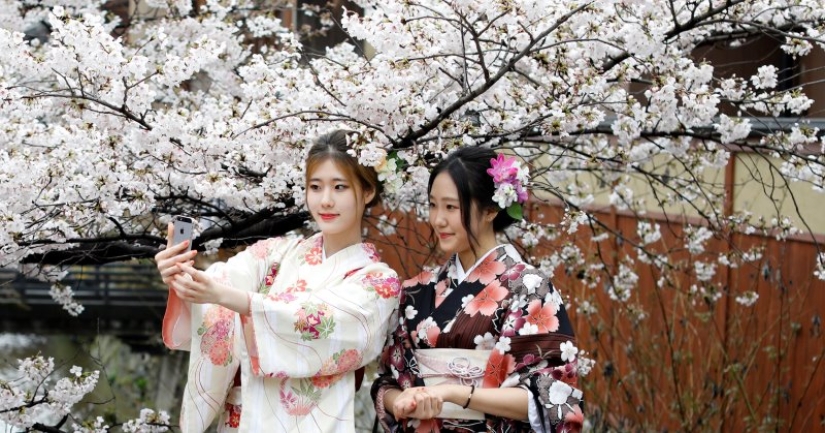
Japanese sakura is a cherry, but its fruits are small and inedible. Therefore, this plant has an exclusively decorative purpose – pink sakura flowers delight the eye from a week of days to a month, depending on the climate, soil and age of the plant. Cherry blossom begins in Japan at different times, for example, on the southern islands, flowers appear at the end of February, and in northern Hokkaido only in May.
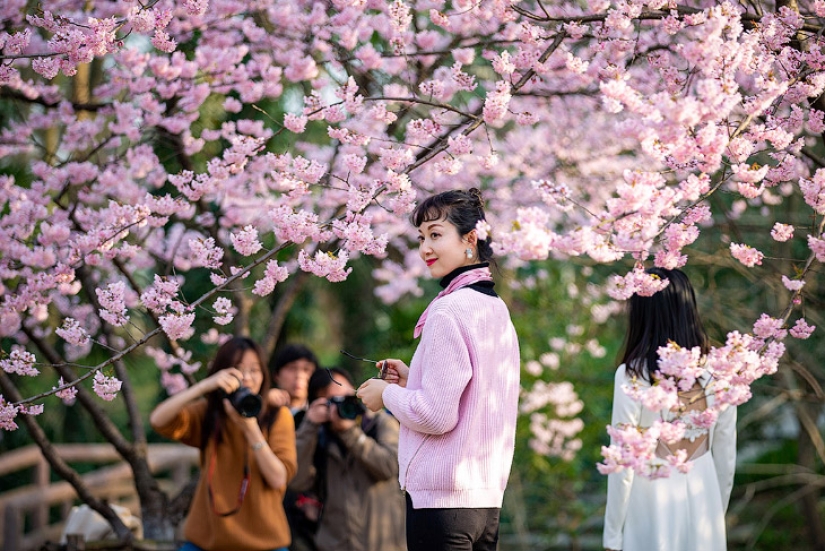
The tradition of admiring the cherry blossom has begun… from the plum tree. It was the mountain plum, brought to Japan from China in the 3rd century AD, that became the first object of veneration. For Japan, profusely blooming pink trees were a rarity and only noble persons could afford to grow them in the garden.
Watching the flowering of trees, the Japanese aristocrats decided that it was very similar to the transience of human life. Later, the mountain plum was replaced by sakura, but the meaning of admiring the bloom has not changed. Japanese cherries were valued not only by the elite, but also by ordinary peasants. Its flowering became a sign that the soil was sufficiently warmed up and it was possible to start planting rice.
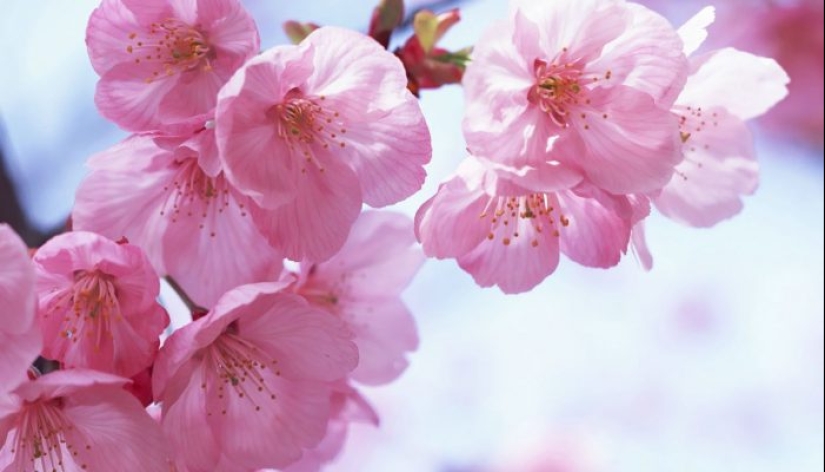
Sakura from Mount Yoshino is recognized as the most beautiful in Japan, and therefore in the whole world. In order to determine the best garden, a competition "Flower of the Motherland" was held in 1984, sponsored by a major television and radio company. The authoritative commission traveled all over the country until it chose the somei-yoshino trees, which originated from a mountain garden, as the symbol of Japan.
This variety is quite old – it appeared in the 19th century after crossing trees of the Yamazakura and Ooshima-dzakura varieties. An important difference between these trees can be considered that it first begins to bloom, and then releases leaves. Thus, nothing prevents you from admiring the color of the tree.
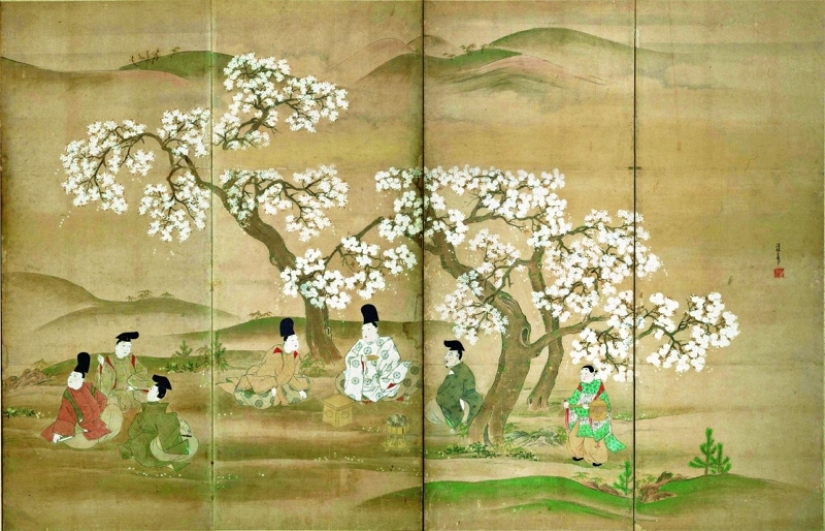
For the Japanese, sakura is not just an object for admiring and one of the main symbols of the country, but also the personification of well-being and female beauty. There are many beautiful legends associated with this tree, many of which are associated with the traditional religion – Shintoism.
One of the legends says that when the god Ninigi decided to get married, the god Thor sent his eldest daughter, High Rock, to him. The girl was accompanied by her younger sister, Cherry Blossom. The young deity liked her more than the older one, because she was young, fresh and direct. Ninigi chose the younger sister, and sent the older one back to his father.
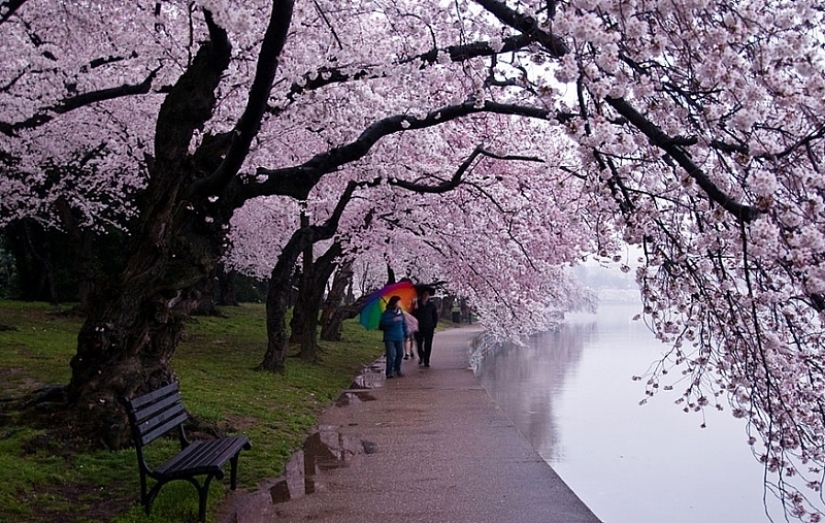
Such an act angered the god Thor and he decided to punish the young man. He said so:
After that, the descendants of the god Niniga and Cherry Blossom became ordinary mortal people and their lives are short and full of events.
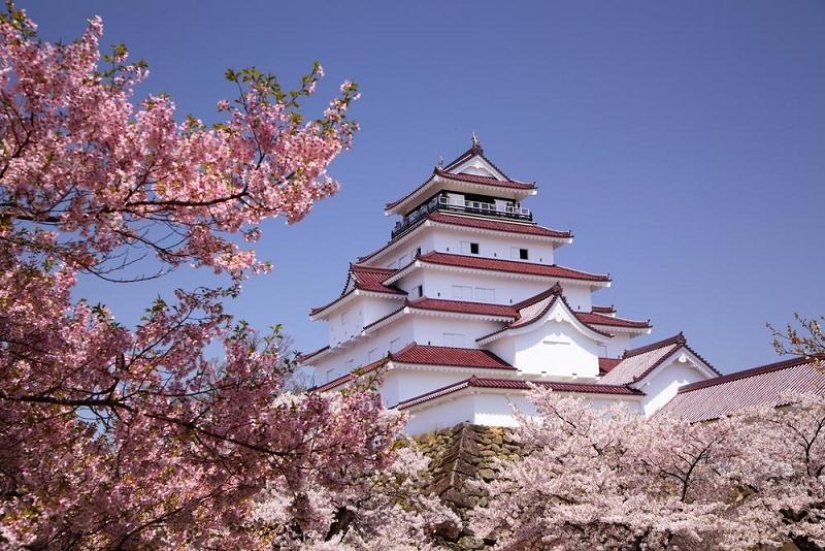
The tradition of admiring sakura, "hanami", has turned into a real holiday, which lasts until the cherry blossoms. Historians believe that it all began in the Nara period, in 710-794, when the custom appeared to admire the flowering of the ume-mountain plum. In the Heian period, before 1185, this tradition covered all of Japan, but it was available only to aristocrats.
Only in the Edo period from 1603-1868, it was sakura that became the main subject of contemplation for the Japanese, and the Hanami blossom festival became available not only for the elite, but for all residents of the empire. Japanese cherry trees began to appear not only in the gardens of nobles and temples, but also near the houses of peasants.
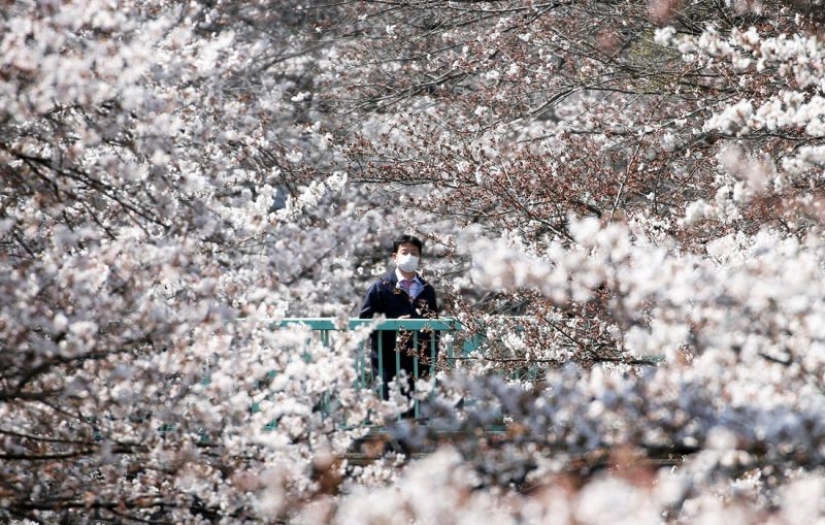
Although "hanami" is a big holiday for the Japanese for many centuries, not a single day off is timed to the cherry blossom. But the inhabitants of the Land of the Rising Sun, for all their busy work, still find time to visit parks and admire flowering trees.
Picnics under the shade of cherry blossoms are very popular. The camp even produces special holiday sets for such events – "Hanami-bento". Some entrepreneurs even manage to combine a holiday and work – they schedule business meetings in the gardens of flowering trees and it is believed that contracts concluded in such an environment are the most productive.
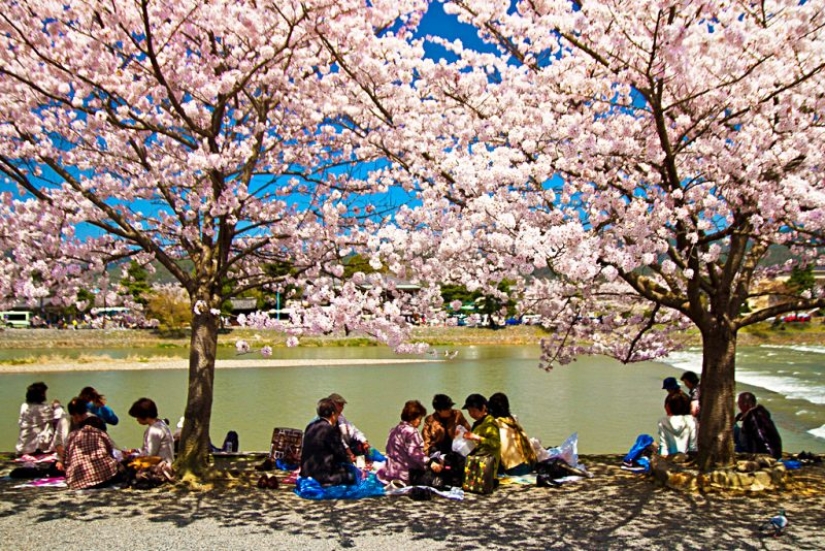
In spring, not only sakura blooms in Japan, and residents of the country are happy to admire other beautiful flowers, for example, phlox.
Keywords: Holiday | Culture | Asia | Japan | History | Peoples | Flowers | Sakura | Custom
Post News ArticleRecent articles

Porridge is a great option for breakfast. It’s easy and quick to prepare, and you’ll definitely have enough strength to hold ...

On October 14, 1926, Alan Milne's book "Winnie the pOoh" was published in the London publishing house Methuen & Co. Children, ...
Related articles

Artist Kat Riley creates amazing photorealistic drawings that explore the power of touch and the sensuality of the flesh. In each ...

The world community was shocked when in 2007 a dirty naked woman was found in the Cambodian jungle, who did not speak, could not ...

Polish photographer David Kashlikowski took amazing pictures of a glacier in the Karakoram mountain system in Pakistan from a ...

Ladies, no offense, but men are better at navigating the terrain than you are. Men, do not be offended, but ladies are better than ...